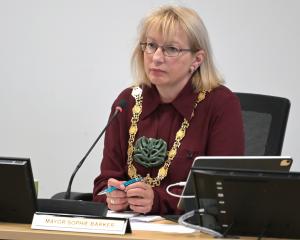The problems at Dunedin Hospital's seven-storey clinical services building keep mounting.
Last year, came the unwelcome and unplanned requirement to spend $1.75 million to fix leaks.
A downpour exposed an appalling situation where patching here and there would no longer work and the source of many leaks could not be found.
Then, came news affecting the adjacent ward block.
The College of Intensive Medicine of Australia and New Zealand has withdrawn the hospital's intensive care unit's training accreditation, with the main issue being the state of the unit.
A $2 million refurbishment, which could well be the barest minimum, is planned but has not begun yet.
Now, comes a report from Beca consultancy group that up to $50 million will be needed to keep the clinical services building at Dunedin Hospital going for another 10 years.
In addition, nearly $75 million will have to be spent on the ward block over the next 10 years.
The clinical services building, commissioned in 1967, is, as Southern District Health Board chief executive Carole Heatly has said, at the end of its economic life.
Clearly, something has to be done.
The obvious solution is to move smartly towards the overdue replacement.
But, therein lies the Catch 22. Government approval for funding to rebuild, which could cost $200 million or more, depends on the Southern District Health Board showing that it is on a path to surplus and could afford the $20 million or so a year in interest and depreciation costs on the new building.
The board seems as far away as ever from anything like a surplus, the latest deficit climbing to $17.8 million.
Although maintenance has been put off as much as possible to save money, the issues have become worse and there is little choice but to spend increasing amounts of money that should be put towards patient care and/or reducing those deficits.
An assessment in 2012 said, with remedial work, it might be possible to extend the life of the building by 25 years.
The latest examination, released by Dunedin North Labour MP David Clark after he obtained it under the Official Information Act, is much bleaker.
There is a long list of problems, including numerous areas identified as containing asbestos.
Planning for a new hospital is only at an early stage and a new block could be eight to 10 years away.
There is talk of determining exactly what the board would need in the future, notably because of the increasing demand from older patients with many health issues.
Long-term management of conditions, rather than one-off treatments, is likely to feature more.
Consultation is under way on a draft strategic health services plan.
It is easy to see such planning processes stretching for years, especially because public consultation is included.
Meanwhile, and before any approval is given, time passes and the building deteriorates further.
The Government has already approved (in 2012) work at Christchurch and Burwood Hospitals costing towards $700 million.
There is a new clinical services block being built at Counties Manukau at more than $200 million and last year a $62.4 million rebuild of Grey Base Hospital was also appproved.
As Dr Clark said, the rebuild in Dunedin should be hastened.
The detailed planning has to get under way in earnest and the Government must signal the go-ahead.
It seems it will most likely be sited where the current children's pavilion is and be of three or four storeys.
Whatever happens, there will be all sorts of logistical issues and disruptions.
The replacement of the clinical services building has yet to fire up the public of Dunedin and Otago.
Nevertheless, as issues continue to mount and as the ability of staff to do their jobs is compromised, expect to see growing awareness and growing concern.
Throwing good money at short-term and emergency maintenance should stop.
There needs, promptly, to be a clear signal and timetable for a replacement clinical services building.












